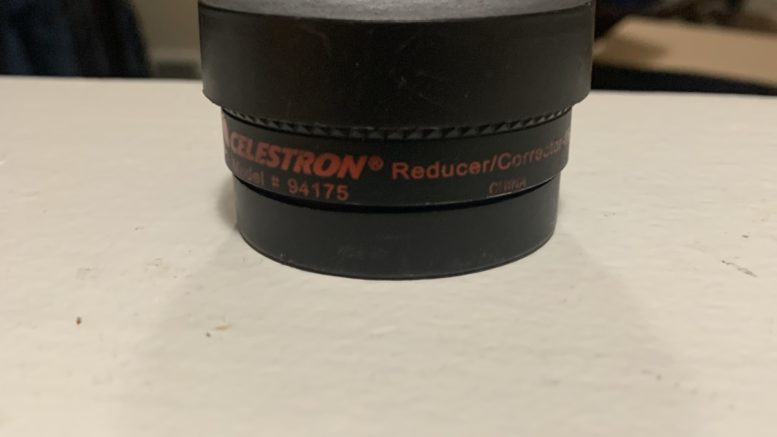A focal reducer, otherwise known as a telecompressor, is an optical element used to reduce focal length, increase lens speed, and in some instances improve optical transfer function performance. Although the popular applications include photography, videography, and astrophotography, we will be focusing on the astrophotographic uses. For the astrophotography uses, the reason for utilizing this tool and these qualities would be for taking pictures of nearby large objects, such as nebulae and maybe the moon in some instances. It is worth noting that focal reducers act in the complete opposite way to the common tool known as a Barlow lens. This is because the combined system of a lens and a focal reducer have smaller back focus than the lens alone. Therefore, this combination places restrictions on lenses and cameras that these devices can be utilized with.
There are lens adapter products that include focal reducers that are extremely useful with digital mirrorless cameras as this combination can be used by products such as DSLR cameras and film based SLRs for astrophotographic imaging. One limit to this utilization is that due to the concentration of light on a smaller sensor, one can expect to achieve about one stop in light collection ability.
For a refractor telescope or simple camera lens, the new effective focal length can be determined by multiplying the original focal length of telescope with the value equal to 1 minus the distance from focal reducer to image plane divided by the focal length of focal reducer.
When using a focal reducer for a reflecting telescope, the calculations to determine the the new effective focal length will be the same. However, since the focal reducer will increase the field of view, there is the risk of introducing vignetting into the image, but the risk depends on the sizes of the secondary mirror and the telescope tube.
As a catadioptric system utilizes a combination of a mirror and lens, the determination of focal reduction is more complicated to calculate. Because these telescopes have variable focal lengths, the imaging plane can move along the axis of the imaging system can cause issues with calculations. When adding the focal reducer will increase the focus towards the back of the telescope which means that the original focal length will increase accordingly.
Here is a great site for helping calculate how a focal reducer would affect your telescope by skyandtelescope.
If one is looking for a focal reducer, we suggest going to the local astronomy clubs and asking friends. Trying them out on a fellow astronomers telescope is a great way to learn from their experiences so you don’t have to pay for one without due diligence. Also, forums can be of assistance is that is what one uses plus buying one from the same manufacturer as your telescope could be a good option of nothing of interest is available.

Thank you so much for doing the job that is remarkable here, everyone will like your post.
Best regards,
Thomassen Schneider
Found your article interesting to read. I can not wait to see your next post.This article is really quite interesting and effective.
King regards,
Dinesen Griffin